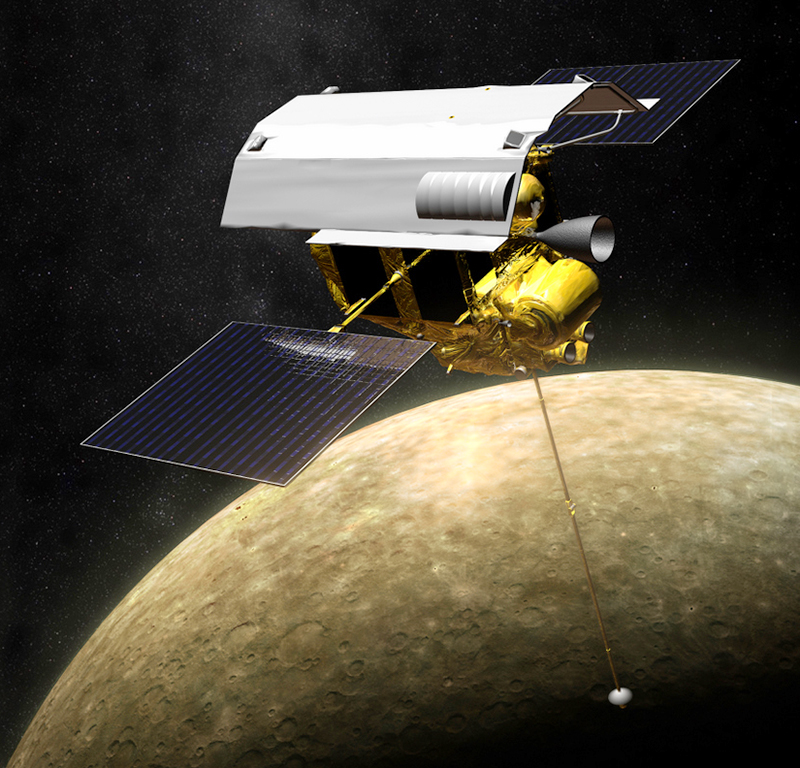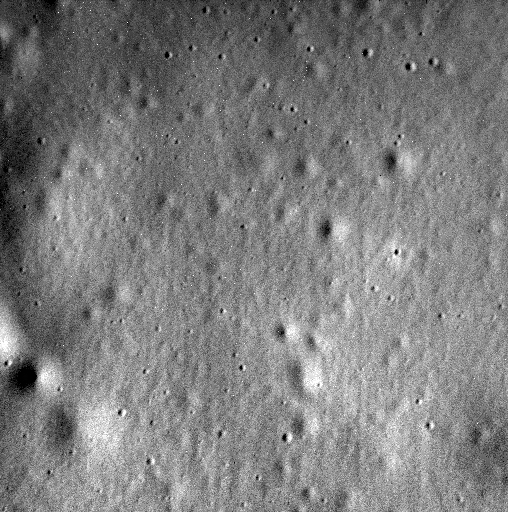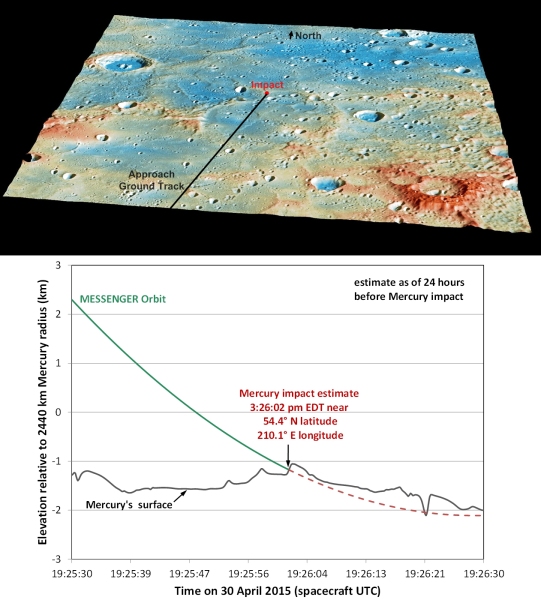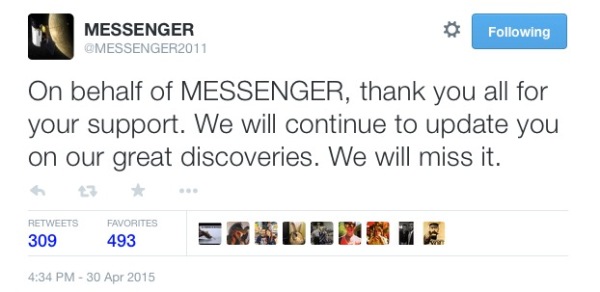
At 3:34 p.m. EDT (19:34 UTC) today, April 30, 2015, after more than ten years in space – and four of them in orbit – the MESSENGER spacecraft’s operational life came to a conclusive end when it impacted the surface of Mercury, as planned.
After revealing the surface of the innermost planet like no mission ever before, MESSENGER’s last act was to contribute one more crater to Mercury’s battered and Sun-scoured face.
The impact site was out of view (and thus out of communication range) of Earth at the time, but based on the spacecraft’s trajectory and time when its signal was last received it’s known that it very likely struck a low ridge just north of a basin named Shakespeare, near 54.5 degrees north latitude and 210.1 degrees east longitude.
Colliding at a velocity of 8,700 mph, MESSENGER’s impact is estimated to have made a crater about 52 feet (16 meters) across.
“Going out with a bang as it impacts the surface of Mercury, we are celebrating MESSENGER as more than a successful mission,” said John Grunsfeld, associate administrator for NASA’s Science Mission Directorate. “The MESSENGER mission will continue to provide scientists with a bonanza of new results as we begin the next phase of this mission – analyzing the exciting data already in the archives, and unraveling the mysteries of Mercury.”
See MESSENGER’s very last transmitted image below.

Over the course of 4,104 completed orbits MESSENGER showed us the unique nature of Mercury, revealing previously-unknown features both on its surface and within its tenuous exosphere and oddly off-center magnetosphere.

See the top ten science discoveries from MESSENGER here.
Sean Solomon, MESSENGER’s Principal Investigator and Director of Columbia University’s Lamont-Doherty Earth Observatory, had nothing but praise for the mission and its team.
“Today we bid a fond farewell to one of the most resilient and accomplished spacecraft ever to have explored our neighboring planets,” Solomon said. “Our craft set a record for planetary flybys, spent more than four years in orbit about the planet closest to the Sun, and survived both punishing heat and extreme doses of radiation.
“Among its other achievements, MESSENGER determined Mercury’s surface composition, revealed its geological history, discovered that its internal magnetic field is offset from the planet’s center, taught us about Mercury’s unusual internal structure, followed the chemical inventory of its exosphere with season and time of day, discovered novel aspects of its extraordinarily active magnetosphere, and verified that its polar deposits are dominantly water ice.
“A resourceful and committed team of engineers, mission operators, scientists, and managers can be extremely proud that the MESSENGER mission has surpassed all expectations and delivered a stunningly long list of discoveries that have changed our views not only of one of Earth’s sibling planets but of the entire inner solar system.”
Watch a video from the MESSENGER team at Johns Hopkins University Applied Physics Laboratory below.
And for a look back at some of MESSENGER’s highlights, just take a look through my post history here.

So thanks, MESSENGER (and team!), for a mission well done that exceeded all expectations. It’s sad to see you go but your data will live on, fueling new discoveries about Mercury and our Solar System for many years to come!

MESSENGER launched aboard a ULA Delta II rocket from Cape Canaveral Air Force Station on August 3, 2004. It established orbit around Mercury on March 18, 2011, the first spacecraft ever to do so.
Source: MESSENGER news release
Reblogged this on usastonehenge.
LikeLike
Great job Messenger !! And a great BRAVO to team of engineers, mission operators, scientists, and managers.
Jeff Barani from Vence (France)
LikeLike
Reblogged this on Rayan's Blog.
LikeLike
Reblogged this on aryasonaimza's Blog and commented:
Bagus untuk di lihat.
LikeLike